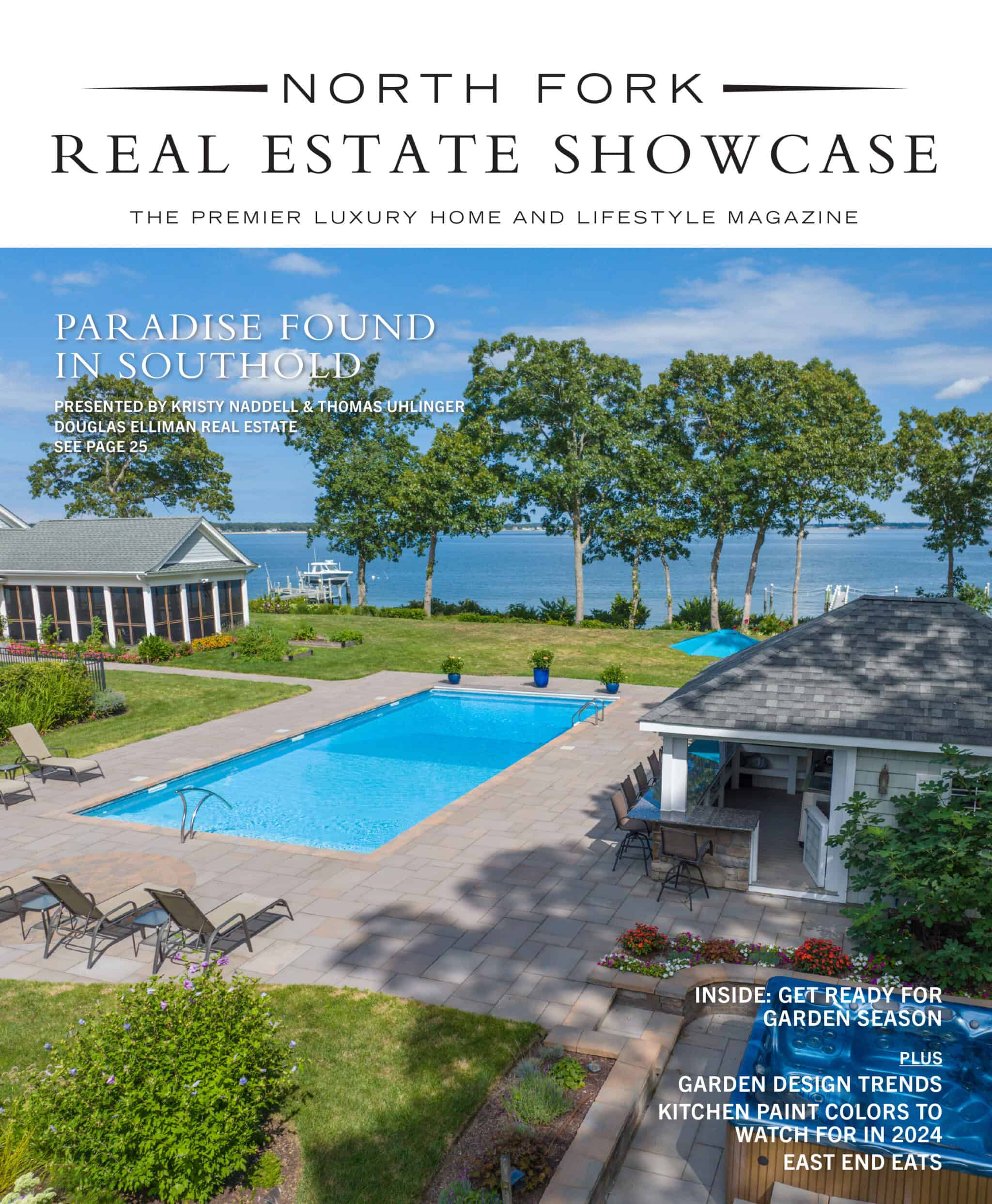Meandering through East Marion and Orient is a bit like time-traveling back to a coastal fishing village in England. Along Orient’s quaint Main Street, 17th century salt box cottages sit beside late 18th century Federalist and Greek Revival homes. Turn of the 19th century Italianate and ornate Victorian houses dot the Main Road from East Marion to Orient Point and clapboarded farmhouses proudly stand upon knolls overlooking the area’s bays and inlets. Not just happenstance, this patchwork of architectural styles is a direct result of the North Fork’s singular history as an English settlement dating back to 1640.
Long Island was originally comprised of three counties: Brooklyn, Queens (which included what is now Nassau County) and Suffolk. While Brooklyn and Queens were originally under Dutch jurisdiction, Suffolk County was entirely English, its earliest settlements being Gardiner’s Island (1639), Southampton (1640) and Southold (1640). By 1661, the growing Southold settlement was partitioned into three distinct areas: Occubogue (Aquebogue), Cutchogue and Oysterponds. Known as “Poquatuck” by the local Indian tribes, English settlers called the area “Oysterponds” because of the teeming shellfish ponds (which are still in existence). The ponds formed a natural divide between “Oysterponds Upper Neck” on the west (now East Marion) and “Oysterponds Lower Neck” on the east (now Orient). Farming served as the principal occupation of the Oysterponds area; however, abundant fishing opportunities (including the local shellfish) promoted the development of a seafaring economy. Trading schooners and fishing boats operated out of the sheltered harbor on Gardiner’s Bay; local fisherman also took to Long Island Sound from the area’s numerous, natural protected coves.
Though many area families were direct descendants of the original English settlers and still had strong ties to England, British forces did not spare Oysterponds during the American Revolution. At General Washington’s direction, many families fled eastern Long Island for the relative safety of Connecticut. Left largely unprotected, British forces plundered the area. Traitor Benedict Arnold, who became a British general, used Oysterponds as his headquarters and staging ground for raids across Long Island Sound.
Still reeling from the devastation caused by the Revolution, the Oysterponds populace cooperated with British warships blockading Long Island Sound and Gardiner’s Bay during the War of 1812. Shipping out of other Long Island ports, including Sag Harbor and Port Jefferson, suffered during the blockade; local lore posits that Oysterponds profited from its relationship with the British fleet, ushering in a new period of economic growth and prosperity to the region.
The two distinct Oysterponds communities went their separate ways in 1836. Upper Neck became Rocky Point for a number of years; however, the community could not get a post office because of a pre-existing Rocky Point further west in Suffolk. So Upper Neck then Rocky Point became Marion, after Revolutionary War hero General Francis “Swamp Fox” Marion. Still not quite right, the “East” was tacked on later so as to avoid even more post office confusion with another Marion in upstate New York. Lower Neck retained the Oysterponds name; yet again, the post office stepped in and changed Oysterponds to Orient in order to avoid confusion with another Long Island town – this time Oyster Bay.
Nomenclature finally settled and post offices in place, agricultural and seafaring commerce continued to flourish in Orient and East Marion. East Marion became the headquarters of an active life saving station credited with countless rescues from shipwrecks along the shores of the Long Island Sound. As the 18th century drew to a close, rail and motor transportation heralded the decline of the shipping and fishing industries but ushered in an altogether new form of commerce: tourism. Rural charm and miles of shoreline made both Orient and East Marion popular tourist destinations for such luminaries as President Grover Cleveland, Walt Whitman, Daniel Webster, Sarah Bernhardt and James Fenimore Cooper.
Fast forward to the 21st century, and little has changed in the Oysterponds environs. In the Orient Historic District – which, according to the archives of the Oysterponds Historical Society, encompasses more than one hundred structures built prior to 1900 – there are only two commercial properties. One is the famed post office; the other is the Orient General Store, a delightful little place serving up stellar baked goods. East Marion, with its graceful houses, picket fences and shady, tree-lined streets, boasts wildlife preserves and miles of protected coastline. Oysterponds is truly a step back in time…








